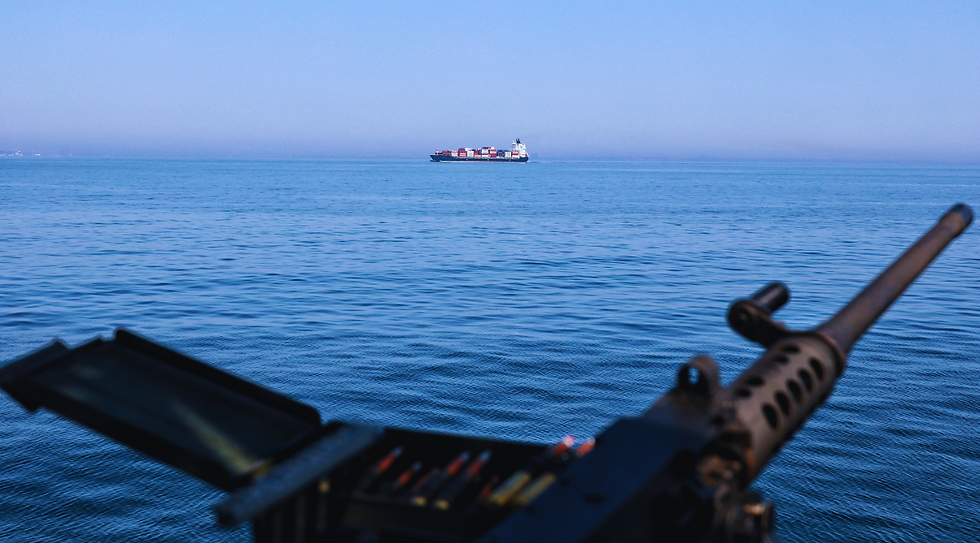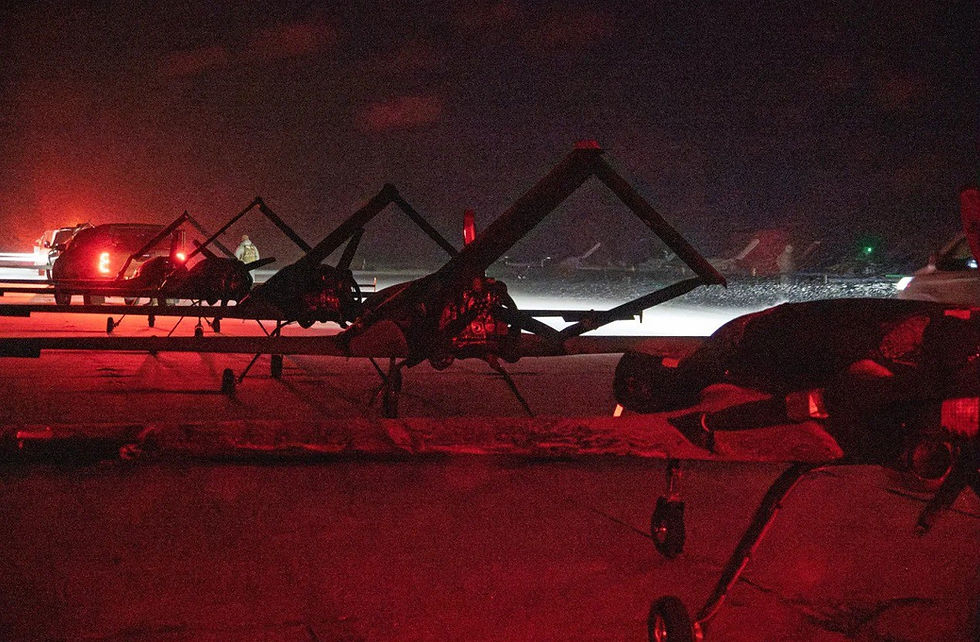“North Korean Rus”: The Image of the DPRK in Russian Propaganda
- Res Publica

- Nov 17, 2023
- 7 min read

The rapprochement between Moscow and Pyongyang is causing concern in the West because of the supply of North Korean weapons to the theater of the Russian-Ukrainian war. Against this backdrop, Russia does not shy away from using the image of the odious Kim regime to strengthen one of its propaganda functions – intimidation of opponents.
In this article, we will reveal and analyze the key aspects of the alternative reality the Russian Federation has created around its cooperation with the DPRK, using Kim Jong-un’s recent visit to Russia as an example. We will also decipher the messages the Kremlin attempts to convey to the international community through its cooperation with North Korea.
For reference: Kim Jong-un’s visit to Russia lasted from 12 to 17 September. During this time, the DPRK leader visited several strategic Russian facilities, including the Vostochny Cosmodrome and the Knyvichi airfield, and met with Vladimir Putin and Sergei Shoigu. Following the visit, Russia announced that it would no longer comply with the UN Security Council sanctions regime against North Korea. It was announced that China would also follow Russia’s lead. On 28 September, the DPRK’s “parliament” decided to enshrine in the North Korean constitution the policy of developing the state’s nuclear potential.
Historical continuity: good old friends
Russia’s propaganda framework for cooperation with the DPRK is based on the narrative of historical friendship between Moscow and Pyongyang. The international community views the DPRK as an archaic regime with a backward economy, and alliance with it only serves to highlight the Kremlin’s isolation, so Russia is looking for arguments for cooperation with it for both domestic and external audiences.
On the eve of Kim’s visit, Russian propagandists began to spread the notion that the end of August was a critical time for relations between Moscow and Pyongyang, because historically, visits by North Korean leaders and meetings with Russian leaders occurred during this time period. The emphasis here was on how expanding cooperation with the DPRK helps Russia strengthen its position in the East Asian region and influence the situation on the Korean Peninsula. In this regard, Mikhail Vinogradov specifically mentioned previous visits by representatives of the Kim dynasty to the USSR and Russia.

Kim Jong Il and Vladimir Putin’s meeting in August 2002

Headline: “Kim Jong Il wants to talk and negotiate”
The rhetoric of historical continuity feeds North Korea’s personality cult, as it is accompanied by messages that flatter the regime and its leaders.
The myth of the “strategic friendship” between the two regimes is developed by publicist Nikolai Vavilov: “When Kim Jong-un came to power, the DPRK began to Russify itself in a hurry. We hardly ever talked about it. It was a different time before the FOA. Orthodox churches and the Orthodox community of North Koreans appeared in the DPRK. A lot of work is being done in this direction.”

Alexander Matsegora, the Russian ambassador to North Korea, also lavishes Kim Jong-un with compliments. Kim Jong-un, for example, was interested in the economy and social life in Russia during his visit, according to him, and demonstrated extensive knowledge of the country.
A signal to the domestic consumer of propaganda: we are scary
As is well known, Russian propaganda is primarily aimed at a domestic audience. The formation of an alternative reality aims to preserve the regime at the expense of:
The people’s lack of will – whether due to support for the regime or fear of the regime;
The availability of resources to strengthen the regime by mobilizing fans, particularly to participate in the so-called “SWO.”
By covering Kim Jong-un’s visit, propaganda sends a message to its domestic audience: Russia is a state with real international influence, capable of lighting the fuse of escalation in East Asia. “The Far East summit between Russian President Vladimir Putin and North Korean leader Kim Jong-un has caused hysteria among Western politicians.” They are concerned that, in addition to supplying weapons, North Korea will send military personnel to Russia,” writes propagandist Vladimir Solovyov.
Russian political analyst Sergei Markov suggested a possible “contract” between the DPRK and Russia: “Russia gives the DPRK a lot of food. Russia has it. The DPRK gives Russia millions of artillery shells. The DPRK has it”.
Even after the North Korean leader’s armored train left Russia, military propagandist Alexander Kots continued the narrative that the West is afraid of cooperation between the two dictators: “DPRK leader Kim Jong-un ended his enchanting visit to Russia, finally trying on a warm gift – a beanie hat.” A clear foreshadowing of the upcoming hot winter… And the mystery is simple: why do some people wear ear flaps when Kim is wearing a hat?”

A signal to the international community: we are dangerous
Throughout the information campaign surrounding Kim and Putin’s meeting, Russian propaganda emphasized how the two countries can and will strengthen each other militarily. The DPRK-related news items were used to reinforce the notion that Russia has allies and that their combined capability is more than sufficient to defeat the West on the battlefield. Headline: Why is the US concerned about Putin-Kim Jong-un talks?

According to a number of z-channels, the Russian Federation can count on shells, heavy equipment, including MLRS and tactical missile systems, which “could well be our response to the possible appearance of American ATACMS missiles from the Khokhuls”, with an accuracy that “will be no less than that of Iskander”.
Georgy Kulikovsky describes in detail the elements of Korean weapons in which Russia is interested in order to create the illusion of the importance of successful negotiations between Kim and Putin: “The Hwasong-5 and upgraded Hwasong-6 missile systems would also be interesting.” The Koreans have also improved the accuracy of these missiles, which could be very effective against the Khokhl’s strategic infrastructure.” The propagandist emphasizes that Korean equipment in the hands of the Russian Federation will be a worthy counter to advanced Western technologies currently in use in Ukraine.
At the same time, narratives about arms supplies work both ways: some propagandists claim that DPRK missiles and ammunition could provide Russia with a critical advantage in Ukraine. Others contend that Russia could provide the DPRK with “highly sensitive military technologies” that would pose a threat to South Korea and Japan.
“The meeting between Putin and Kim at the cosmodrome is a hint to the US that Russia may transfer new missile technologies to the DPRK,” writes Serhiy Markov. […] It has long been necessary to transfer missile technology to the DPRK in order for the DPRK to target all US cities with new long-range missiles. In exchange, 200,000 Korean soldiers will be sent to the United States, and 500,000 Korean workers will be sent to Russia.”
An alternative world order
Russia’s official propaganda often employs the narrative of establishing a new world order, a “multipolar world” that will no longer be focused on the collective West and, in particular, the United States of America. Russian representatives raised this issue at both the BRICS and Russia-Africa summits. This distorted lens was also used to cover Kim Jong-un’s visit to Russia.
The use of “science” to support propaganda was a recurring theme in the messages that accompanied news of Kim Jong-un’s visit to Russia. Russian propaganda actively involves employees of scientific institutes in expressing their opinions, lending the narratives more “authority” for both international and domestic audiences.
For example, Alexander Zhebin, a Russian scholar at the Centre for Korean Studies, suggested that there is a certain “US-Japan-South Korea triangle” that creates a veil to deter Russia, China and the DPRK. Zhebin cites Russia’s aggression against Ukraine as a pretext for erecting this veil, noting that “all the charges brought [against Russia] are fabricated.” “In the current circumstances, it would be quite natural to counteract the enemy’s plans,” the “scientist” notes.
The narrative of a new world order emerges from criticism of the current world order. Through this lens, the Russian Federation has consistently justified its aggression in Ukraine as “defense” against a fictitious enemy, the collective West. Japan and South Korea are also listed as “enemies that pose a threat to global security” in the context of relations with the DPRK.
According to propagandists, the situation in Ukraine has harmed relations between Russia and South Korea, as Seoul has joined the Western line in support of Kyiv against Russia. The potential supply of South Korean arms to Ukraine is referred to as “Western attempts to destroy the Asia-Pacific security architecture.”
The narrative of a new world order is beneficial to North Korea, as it opens up space for opportunities to break out of isolation and preserve the regime. Kim Jong-un stated during his visit to Russia that “the Russian army and people will undoubtedly win a great victory in the sacred struggle to punish evil and create a stable environment for development.” Russia, according to North Korea’s leader, has begun a “sacred struggle” to defend its own security.

Headline: Kim Jong-un said that Russia is opposed by a “gathering of evil.”
The theme of self-defense and security guarantees is not new in the rhetoric of Russia and the DPRK. Similar narratives were already heard after the meeting between Kim Jong-un and Vladimir Putin in 2019, when the Russian leader said that “the DPRK needs guarantees of its security and preservation of sovereignty”.
As a result, the DPRK is formulating rhetoric to build up its nuclear weapons on the Russian model. In solidarity with Russian propaganda, Kim Jong-un said at the 9th session of the DPRK Supreme People’s Assembly that Japan, South Korea and the United States have actually formed an “Asian version of NATO”, which is a destabilizing factor for the region.
Russia uses any excuse to create an alternative reality. In the case of cooperation with the DPRK, it has several components.
First, Russia instrumentalises information about possible cooperation with North Korea to blackmail the collective West. Mainly, propaganda messages are aimed at limiting Kyiv’s support for the Russian-Ukrainian war by threatening to expand cooperation with Pyongyang to areas sensitive to regional security.
Second, the discussion of relations with the DPRK is aimed at domestic consumers as well. The relevant rhetoric seeks to bolster Russian public confidence in the absence of the Putin regime’s isolation, attempting to persuade Russians of the victorious outcome of the so-called “SVO,” which refers to the supply of ammunition and manpower from the DPRK.
Furthermore, the Russian Federation sees the DPRK as a potential partner in the development of an “alternative world order” narrative. In this case, the “multipolar world” is one that listens to and works with Russia, thereby supporting the alternative reality it has created and justifying its genocidal war in Ukraine.
All of these elements are supported by the narrative of the two countries’ long-standing friendship, as well as the use of academics and officials to spread propaganda.
Article by Anastasiia Ratieieva, Analyst at HWAG/UCMC. The article was prepared for publication by volunteers from the Res Publica - The Center for Civil Resistance.





Comments